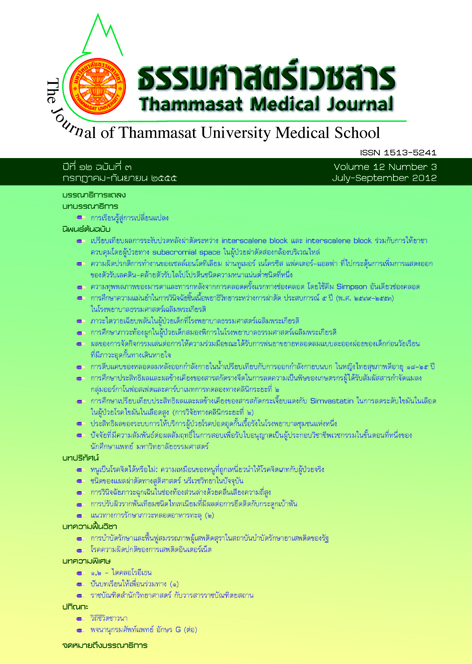CAN THE RAT GET MAD?: The Relevance of Schizophrenic Animal Models to the Patients
Keywords:
โรคจิตเภท, หนูที่ถูกเหนี่ยวนำให้เป็นโรคจิตเภท, Schizophrenia, Schizophrenic animal modelsAbstract
Schizophrenia is a severe mental disorder in which there is impaired judgement and loss of contact with reality.The lifetime prevalence of schizophrenia is approximately 1% worldwide. To understand the mechanisms and investigate the treatments of schizophrenia, the studies in animal are necessary. Several schizophrenic animal models have been produced. Some animal models have been reported irrelevant to the disorder and no longer used. To date, there are three valuable animal models, which show the most similarity to clinical aspects of schizophrenia: 1) Sub-chronic phencyclidine (PCP) administration, 2) Amphetamine administration, and 3) Isolation rearing model. “Can these animal struly express the symptoms relevant to schizophrenic patients?” is always the question. Locomotor hyperactivity, decreased capability of memory in novel object recognition (NOR) test and prepulse inhibition (PPI) defi cit have been reported in these animal models. These behavioral tests showed similarity to clinical aspects of schizophrenia, so sub-chronic PCP administration, amphetamine administration and isolation rearing could be valuable animal models for studying the neurobiological basis, pathological mechanism and, to some extent, treatment of schizophrenia.
Key words: Schizophrenia, Schizophrenic animal models



